
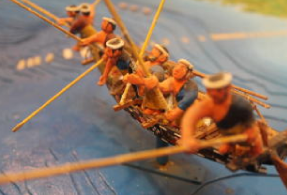
漁師さん、海女さん、海に生きるすべての人は海民です。
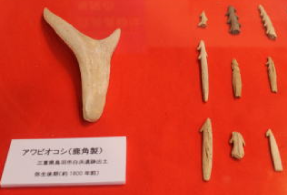
鳥羽白浜遺跡からはアワビオコシやアワビやサザエの殻、釣り針など出土している。
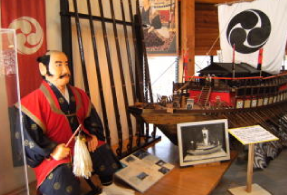
志摩・鳥羽を拠点に活躍した日本最初の水軍大将 九鬼嘉隆。
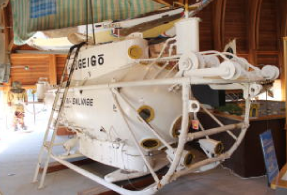
鳥羽市神島の漁師のアイディアから潜水艇:白鯨号が完成した。
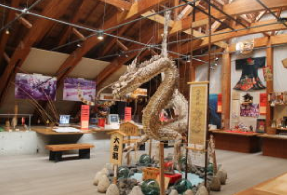
海女の竜神信仰
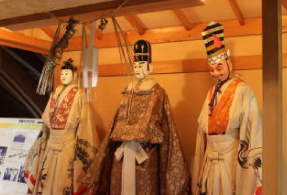
正月に海で舞う三番叟
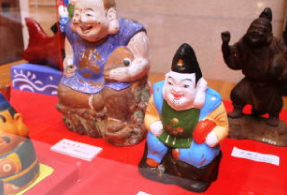
えべっさんがいっぱい
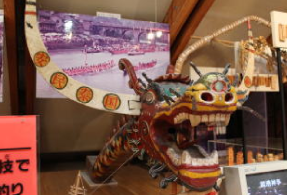
竜船競争の竜頭(中国貴州省)
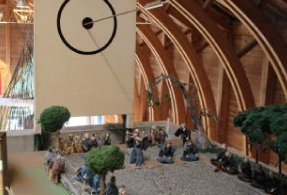
漁村の弓引き神事
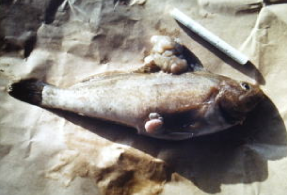
公害
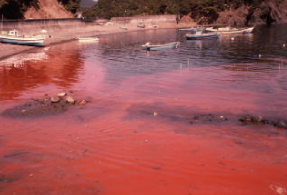
赤潮
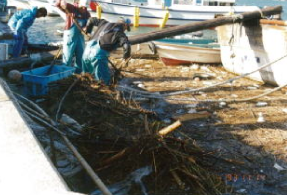
漂着ゴミ
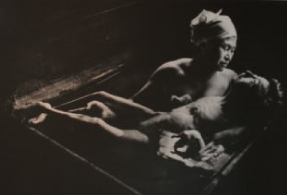
水俣病
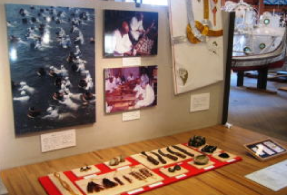
国崎(くざき)の海から神宮へ
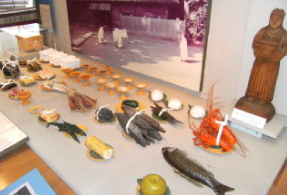
御饌つ国(みけつくに)の神様はさすが食通
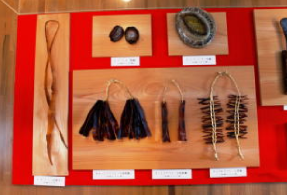
熨斗あわび
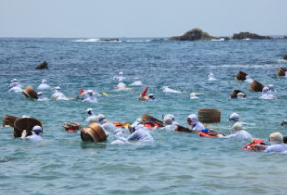
御潜(みかづき)神事
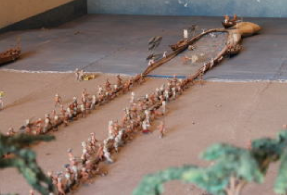
地曳き網ジオラマ
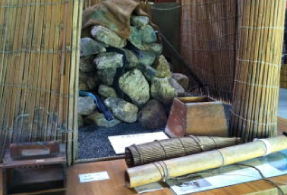
ウナギ 石倉漁
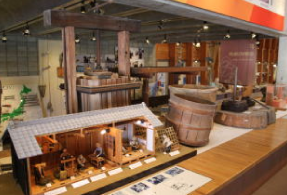
ノリ養殖の道具
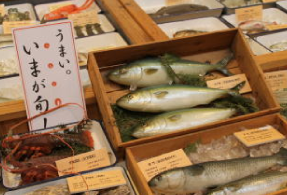
伊勢湾では多くの魚介藻類がとれます

昭和12年 錦 鰤大敷網 55000尾鰤大漁
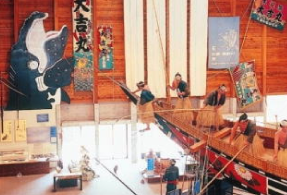
八丁櫓 カツオ一本釣り漁。秋口、一本釣りで獲った「戻りカツオ」の味は絶品です。
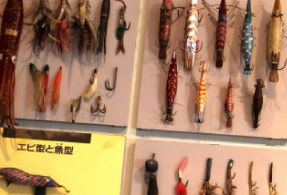
疑似餌いろいろ
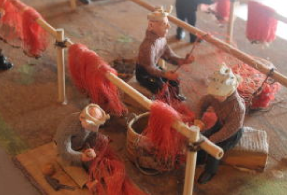
イセエビは伊勢の名がついていますが、ほんとうは志摩のエビです。その漁法はいまも刺し網という単純な方法です。
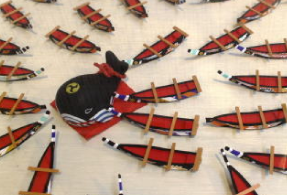
クジラ漁
- 鳥羽志摩の海女の操業人数
【海女】2022年調査 … tobashima(海女).pdf 【海士】2022年調査 … tobashima(海士).pdf - 全国海女操業人数2010年調査 … zenkoku-ama.pdf
この人数を使用する場合は必ず「海の博物館調査」との文言を入れてください。
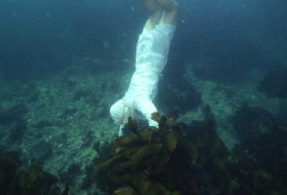
鳥羽・志摩の海女 素潜り漁の様子
As they work in the sea, ama treasure the natural environment of the ocean; they have maintained a sustainable harvest of these resources for more than 3000 years.
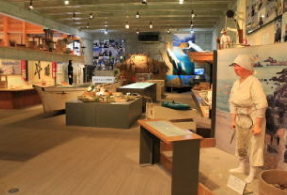
鳥羽・志摩の海女 展示風景
Ama work consists of diving into the sea to catch ocean treasure,such as abalone, other snailes and seaweed.Their fishing methods evolved over time from a struggle with neture,to a refined method of coexistence imbued with knowledge.
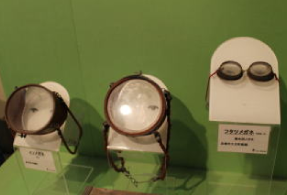
磯メガネ(ISOMEGANE =Goggles)
古くは、海女は「ス目」とよばれるように、めがねなしで潜っていました。初めてめがねが使われたのは、明治の中頃です。
In olden times ama used goggles with two lenses,but now they all use a single-lens mask.
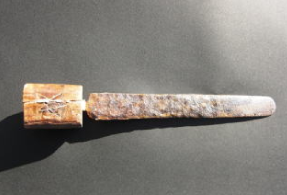
アワビオコシ(AWABIOKOSHI=Abalone Chisel)
アワビをとる道具。大きさ場所によってオオノミ・コノミを使い分けたり、伊勢エビやウニにも兼用できるカギノミを使ったりします。
Tool pry abalone from rocks and boulders.Large chisels and small chisels are used,depending on location and size of the abalone.
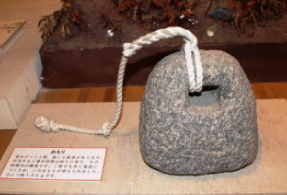
クリイシ、クリイカラ(KURIISHI,KURIIKARA=Weights)
1秒でも早く海底につくためにオモリが使われました。
The average ama dive lasts for 50 seconds.It is a time of struggle. Weights are used to reach the sea floor 'a second earlier'.
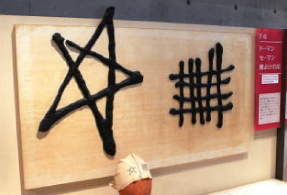
魔よけの印セーマン・ドーマン(Seiman and Doman)
トモカツギという魔物から身を守るために、磯てぬぐいやノミ、磯着に魔よけの印をつけています
Common talismans on ama towels and wraps are the star symbol(Seiman) and a latticed pattern symbol(Doman) made from purple shell dye or embroidered with black thread.These protect ama from danger and strange phenomena.
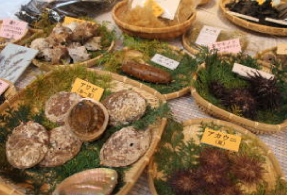
海女の漁獲物(アワビ、サザエ、ナマコ、海藻類など)
Ama's Catch(abalone,turban snails,sea cucumber,seaweeds,etc.)
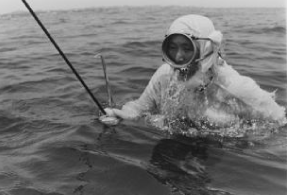
昭和50年代の海女
- 『目で見る 鳥羽志摩の海女』
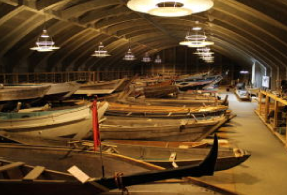
収蔵庫 船の棟約80隻近い船が納められている
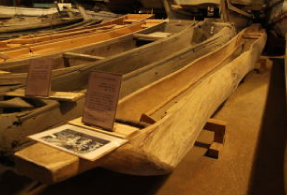
丸木船
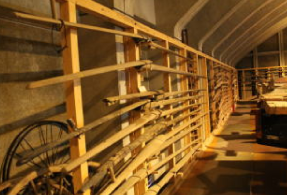
櫓や櫂
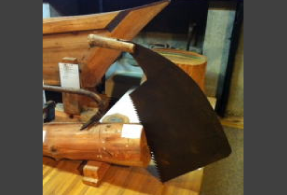
船大工道具 マイラ
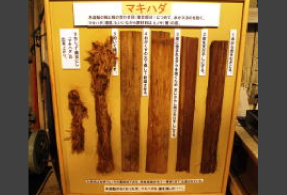
マキハダ
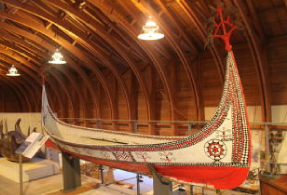
台湾タタラ











